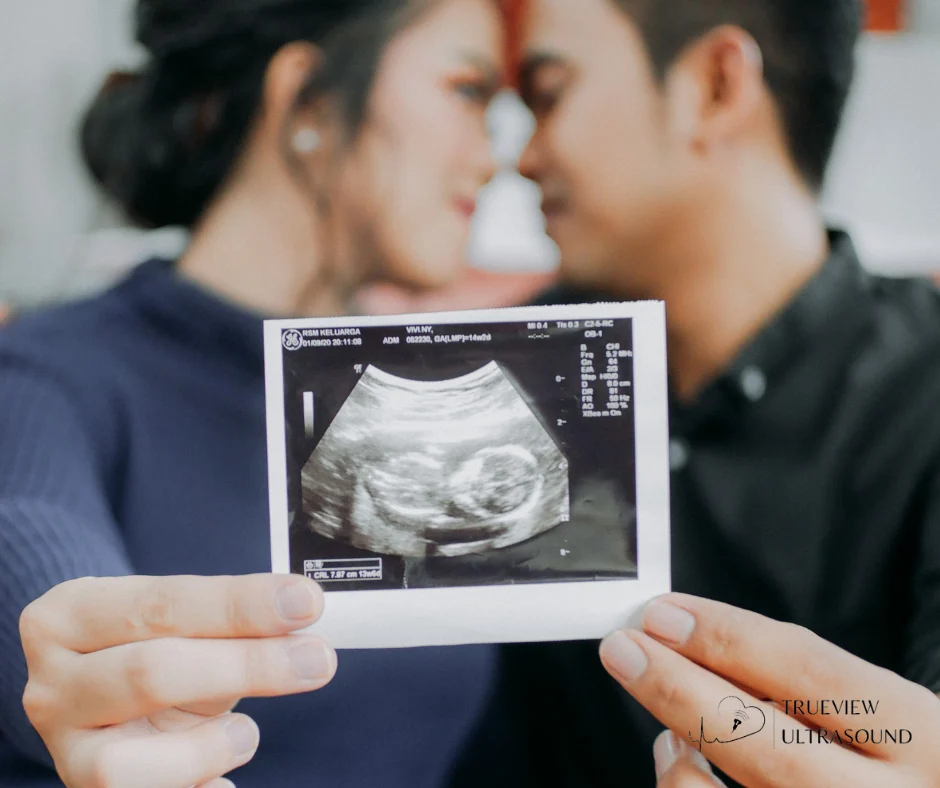For many expecting parents, finding out their baby’s gender is one of the most anticipated moments of pregnancy. With modern technology like ultrasound, this big reveal often happens weeks before birth. But just how accurate is gender determination, and what factors affect the results?
Ultrasound gender prediction has come a long way in recent decades. At TrueView Ultrasound, we use advanced 2D, 3D, and 5D imaging technology to give families the clearest and most confident gender results possible. Alongside our fetal imaging services, we also offer a range of non-invasive screenings to help parents feel informed and prepared.
When Can Gender Be Determined?
Timing Matters
Ultrasound can typically determine gender between 14 to 20 weeks of pregnancy. The most accurate window is between 18 and 22 weeks when the baby’s genitalia is more developed and clearly visible. Earlier scans, such as at 12 to 14 weeks, may offer a guess based on the “nub theory,” but they carry a higher margin of error.
Most providers—including the American College of Obstetricians and Gynecologists—recommend waiting until the second trimester for the most reliable results. At TrueView, we help parents schedule their session at the ideal stage to ensure optimal image clarity and fetal positioning.
How Does Ultrasound Determine Gender?

A View Between the Legs
The sonographer looks for physical signs of male or female anatomy. A male fetus may show a penis and scrotum, while a female typically presents three lines or a “hamburger sign” indicating labia.
Modern ultrasound tools use high-frequency sound waves and real-time imaging, but fetal position plays a big role in how well the genital area can be seen. Movement, leg placement, and even amniotic fluid levels affect visibility. That’s why we also provide ultrasound preparation guidance to help increase the likelihood of a clear view during the appointment.
What Affects Accuracy?
Factors That May Influence Results
- Gestational Age – Too early, and the genitals may not be developed enough to tell.
- Fetal Positioning – If the baby is curled up or has legs crossed, it’s harder to see clearly.
- Experience of the Sonographer – Trained professionals know how to get the best angle and interpret details accurately.
- Equipment Quality – High-resolution 3D and 5D machines improve visualization and reduce guesswork.
Studies have shown that by 20 weeks, gender accuracy from ultrasound exceeds 99% when conditions are ideal. According to the NIH, earlier scans (before 14 weeks) have an accuracy rate closer to 70–80%, depending on technique and technician expertise.
Can Mistakes Happen?
Rare, But Possible
Although rare, incorrect gender predictions can happen. This is more common in early scans or when imaging is unclear. That’s why TrueView focuses on creating a calm, thorough environment where parents receive high-quality images, not rushed guesses.
When imaging isn’t ideal, we encourage rescheduling rather than forcing a result. Parents often express relief that our approach values accuracy over speed. If you ever have questions, our contact page makes it easy to reach our certified team.
What Science and Parents Agree On
Gender determination is highly accurate, especially when done after 18 weeks by a certified sonographer using high-quality equipment. While blood tests like NIPT can offer genetic confirmation, many parents still prefer the bonding experience of seeing their baby live on-screen during the ultrasound.
At TrueView, we combine clinical precision with a comfortable, memorable experience. Our clients return because they trust our care and technology. Whether you’re confirming a gender reveal or just curious, we’re here to give you the clearest answer possible.
If you’re planning your scan, know that your baby’s position, timing, and equipment quality all affect the outcome. Our team is trained to guide you through the process and deliver results you can trust. There’s a reason families choose us for milestones this important.
